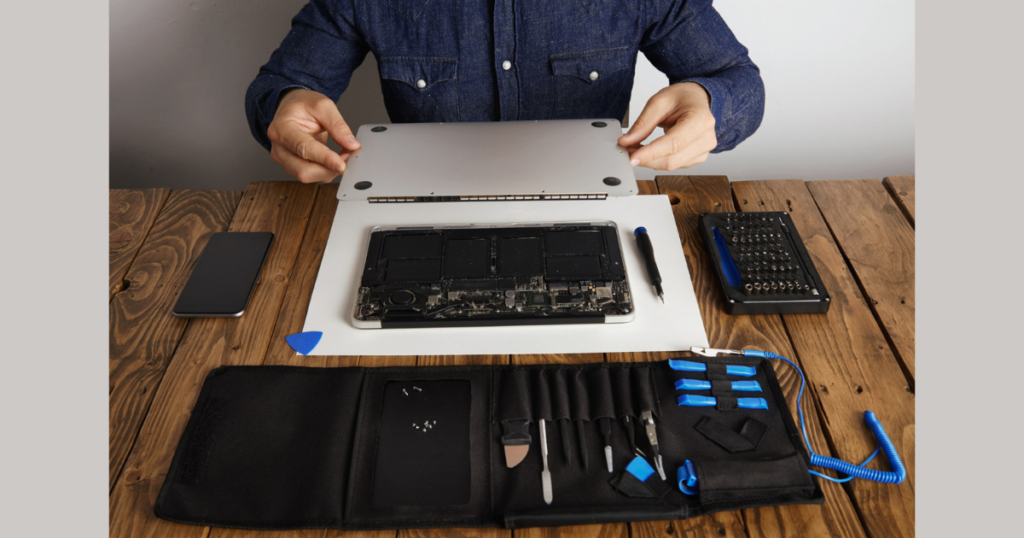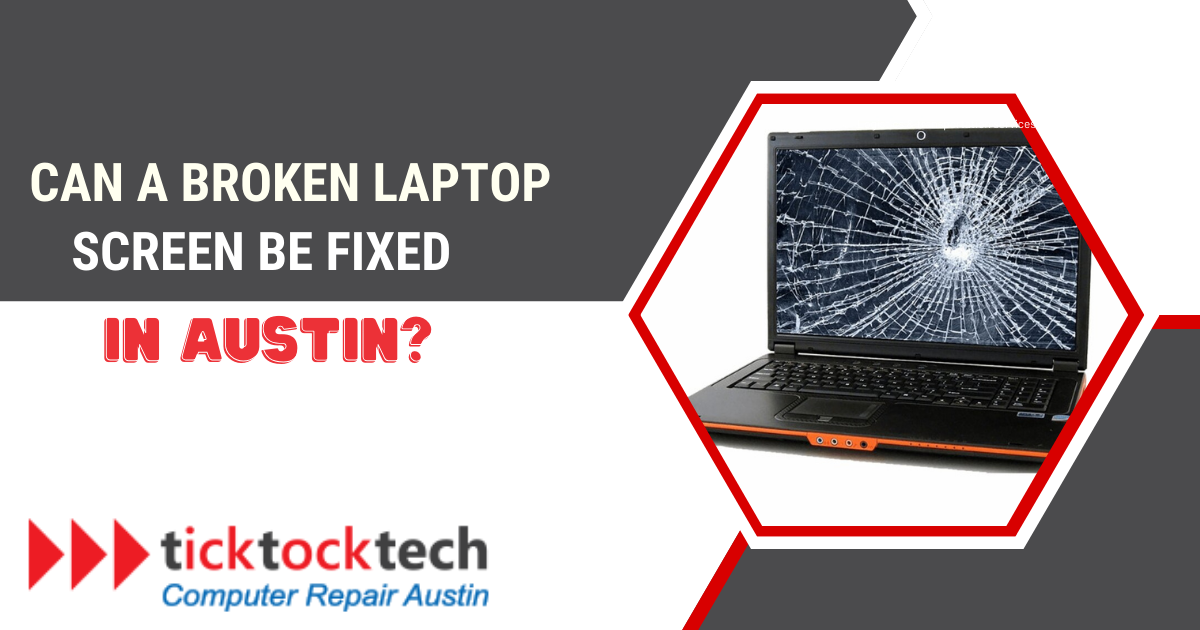Are you staring at your laptop screen in despair, wondering how you can fix your broken screen? You’re at the right place. In this article, we will take you through how to fix a broken laptop screen.
Related – Upgrading Your Laptop: When and How to Do It
What causes a Broken Laptop Screen?
A broken laptop screen can be due to many reasons. Understanding these common causes of broken laptop screens can help you take preventive measures to protect your laptop and minimize the risk of screen damage. Some common causes of a broken laptop screen include:
1. Physical Impact
One of the most common reasons for a broken laptop screen is physical damage resulting from impacts or drops. Accidentally knocking your laptop off a table or bumping it against a hard surface. Dropping your laptop can cause cracks, shattered glass, or internal screen damage. Even a relatively minor impact can cause significant screen issues.
2. Pressure
Applying excessive pressure to your laptop screen, especially when it’s closed, can lead to screen damage. For example, placing heavy objects on a closed laptop, stacking heavy items in a bag containing a laptop, or mishandling your screen during cleaning or maintenance can cause screen cracks or distortions.
3. Closing an Object Inside
Closing your laptop with an object like a pen, headphones, or a small item on the keyboard can cause pressure on the screen when you shut it. This pressure can lead to screen cracks or distortions.
4. Manufacturing Defects
Sometimes, a broken laptop screen may be caused by manufacturing defects. Such defects may not be immediately apparent but can lead to screen issues over time with regular use.
Related: How to Setup a Newly Bought Laptop
5. Overheating
Laptops generate heat during operation. However, excessive heat can damage your screen over time. If a laptop’s cooling system is inadequate or clogged with dust, it can lead to overheating, which may affect various internal components, including the screen.
6. Liquid Damage
Spilling liquids on your laptop, particularly on the keyboard, can seep into the screen components, causing electrical damage or malfunction. Liquid damage can cause flickering, dead pixels, or complete screen failure.
7. Aging and Wear
Over time, laptops can experience wear and tear, and this includes the screen. Repeated opening and closing, pressure from the keyboard or palm rests, and exposure to environmental factors like dust can contribute to screen deterioration.
8. Hinges and Casing Damage
Damage to the laptop’s hinges or casing can indirectly affect the screen. If the hinges are loose or broken, they may not provide the required support to your screen, leading to alignment issues or pressure on the display.
How to Fix a Broken Laptop Screen

When dealing with a broken laptop screen, resolving the issue often involves replacing the damaged screen with a new one. Here are the steps to guide you through this process:
- Select a Compatible Replacement Screen: Purchase a replacement display compatible with your laptop. Ensure you have a suitable workspace, free of any clutter or computer accessories.
- Prepare Your Laptop: Turn off your laptop, unplug it from the power source, and remove the battery to ensure safety during the screen replacement.
- Remove Screws Securing the Screen: Using a screwdriver, locate and remove the screws that secure the broken screen. Typically, you’ll find these screws near the base of the screen’s frame.
- Detach the Broken Screen: After removing all the screws, separate the broken screen from the laptop’s frame. Carefully slide your finger around the bezel to facilitate this process. If the screen refuses to come out, check for any remaining screws that might still be holding it.
- Expose the Metal Frame: Once you’ve removed the bezel, you’ll see a metal frame surrounding it. Tilt the display to access this metal frame.
- Disconnect Cables: Your laptop’s screen is connected to the display by two significant cables: the inverter’s power connector and the visual cable. Disconnect the cable linking the laptop and the display. Leave the inverter cable in place.
- Install the New Screen: Insert the new screen into the laptop’s shell, making sure it fits securely. Power up your laptop to ensure the new screen functions correctly. Once you’ve confirmed that the panel is working properly, close the laptop.
- Secure the LEDs: Bolt the LEDs into place and use rubber or plastic closures to protect them.
Frequently Asked Questions
The cost of replacing a cracked laptop screen varies depending on the size and laptop model. However, it costs around $100 to $300 to replace a cracked or broken laptop screen.
The price to fix a laptop screen depends on the laptop’s model. However, it is important to note that replacing a laptop screen is often less expensive than buying a new laptop.
Yes, a laptop can be fixed if the screen is broken.
Conclusion: How to Fix a Broken Screen in Austin
Replacing a broken laptop screen is easy, but it does demand a certain level of expertise. By following the steps in this guide, you can fix your screen to save money on repairs. However, it’s not recommended unless you have the necessary experience and tools. It’s advisable to seek assistance from a reliable computer and laptop repair company to fix your broken screen and get your laptop running again.

